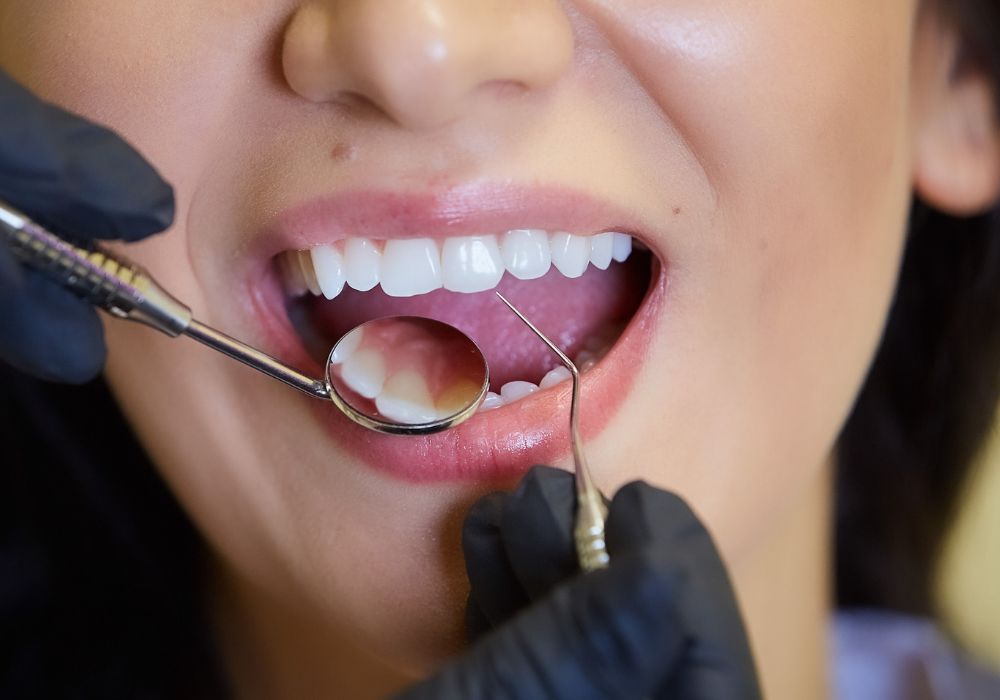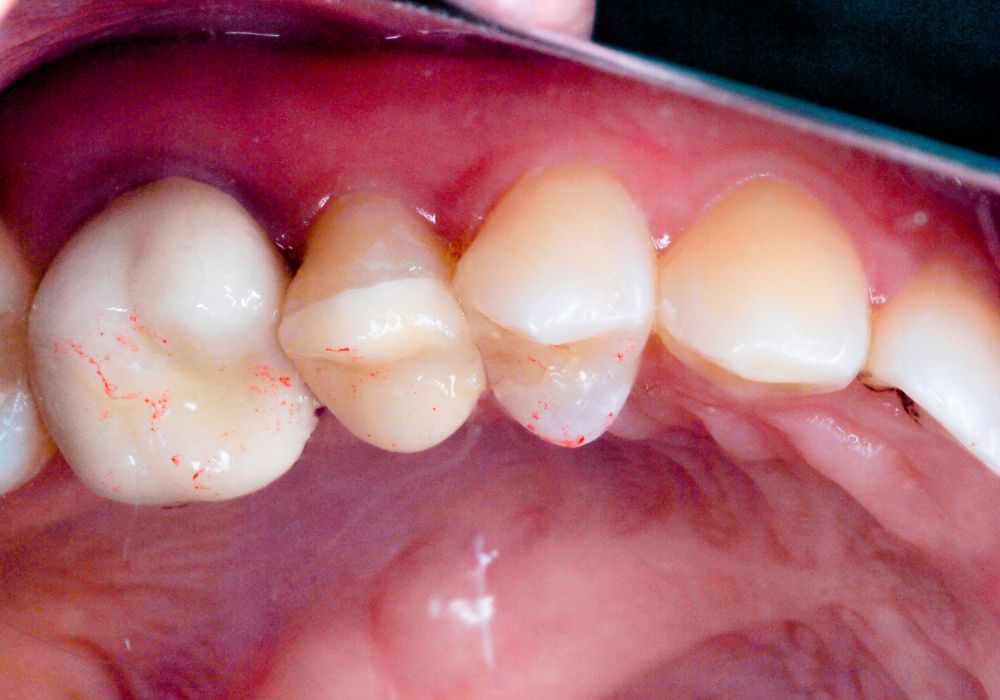Did you just get a dental filling? If yes, you must be wondering how long do dental fillings last. After all, each filling costs around $200 to $600 in the US!
But the answer to this question isn’t a simple one. The life of a dental filling is affected by multiple factors like type of filing, eating habits, hygiene, and many more. So, every individual is likely to have a different timespan.
So, in today’s post, we will explore these factors in detail and help you estimate how long your dental fillings will last. Let’s dig in!
What’s the Average Life of a Dental Filling?

A dental filling is exactly what it sounds like. Dentists fill your tooth cavity with material to stop the bacteria from spreading further. This restores the strength of the affected tooth and helps it last longer.
However, over time, the wear and tear causes the dental filling to fail. It will either develop cracks and come off in pieces or just pop out altogether. This will trigger sensitivity in your tooth and expose bacteria to the decaying site.
You will need to get a quick replacement filling to stop the deterioration. In most cases, your dentist will alert you about it during the routine checkup. But if you don’t get your teeth regularly examined, keep a lookout for the signs yourself.
This usually occurs when your dental filling is 10 years old.
Permanent Fillings: Is That Even a Thing?
Some dentists may advertise their services by offering you “permanent fillings”. But please don’t fall for it because no dental filling can last forever.
Even the strongest dental fillings will fail after a certain number of years. This is because fillings don’t replace the lost tooth parts. They just fill the cavity to prevent further damage, and since no material is strong enough to withstand:
- Pressure from other teeth during chewing
- Dissolving action of enzymes
- Exposure to constant acidic or alkaline conditions (due to food)
– the fillings break down after some time. So, don’t believe such advertisements or pay higher charges for anyone claiming to fix your dental filling problem forever.
Factors That Affect the Life of Dental Fillings

Now that we know all dental fillings are temporary. Let’s have a look at what affects their lifespan.
1. Type of Filling
There are different filling materials used to treat tooth decay. Since each material has unique properties, the durability and quality of the dental filling will vary by the material chosen. Some popular options include:
- Glass ionomers – 5 to 7 years
Glass ionomers are the least durable type of filling. They are made from a blend of acrylic and glass particles. So, the material is stable and effective but not long-lasting.
Usually, these glass ionomer fillings are recommended for small erosion cavities on the sides. They aren’t used for filling the cavities on the chewing surfaces.
- Amalgam – 7 to 15 years
Amalgam literally translates to a mixture or blend. This type of filling contains a mixture of metals, like silver, tin alloy, and copper. When the proportion of silver is more, the filling is called silver amalgam filling.
It is very durable and cheap. Dentists have been recommending it to their patients for over 100 years. However, it may not feel very natural when chewing food.
Also, some amalgam fillings have traces of mercury. This is toxic and may result in dire consequences for pregnant women, children under 6 years, and people with allergies. You should always inquire about the filling composition from your dentist.
- Composite – 7 years
Composite fillings are made from a mixture of ceramic resins and acrylics. These fillings are nowhere as strong as amalgam fillings. At most, they will last for up to 10 years.
However, people still prefer composite dental filling over amalgam. This is because the color of the filling can be customized to match the teeth. So, it doesn’t matter what shade of teeth you have, the tooth-colored fillings will blend in perfectly well.
- Porcelain – 15 years
This type of dental filling is very expensive. The material is made by compounding silicon and oxygen into a non-crystalline glass. This makes it very strong and stain-resistant.
Although its common name is porcelain fillings, some people also refer it to as inlays and ceramic fillings. So, don’t be confused when these terms are used interchangeably – they are all the same thing.
- Gold – 20 to 30 years
Gold fillings aren’t entirely made of gold. They contain primarily gold with traces of copper, platinum, silver, and other metals. This makes it one of the most durable fillings available to date.
However, they are also very expensive with prices ranging up to $1000 for a single tooth. Most people drop the option because of it.
2. Oral Hygiene
After getting a dental filling, it’s important to take good care of your teeth. You should brush twice a day and floss to remove stuck food particles. If you skip these oral hygiene practices, the bacteria will wear down the dental filling.
The weakened filling won’t be able to withstand the pressure from chewing and grinding. As a result, it will break apart and come put in pieces. Sometimes, you won’t even know the filling is eroded until the sensitivity causes pain.
On average, the dental filling of people with poor oral hygiene lasts for a year or two. For people who follow these oral hygiene practices but don’t do it properly, the dental filling will last anywhere from 4 to 5 years.
3. Eating Practices
Dental fillings don’t restrict you from any kind of food. You can eat whatever you want, but if your eating practices are unhealthy, the dental filling will break down much quicker than you can anticipate.
So, what is considered to be an unhealthy eating practice? Eating too much sugar!
When we eat something sugary, the bacteria and enzymes in our mouth act on the food to produce an acid. This acid has an abrasive effect on teeth and dental fillings. If you consume too many sugary foods, a lot of acids are produced that erode the filling faster.
The acid will also cause other healthy teeth to decay. You can develop another cavity or even gum disease.
Another unhealthy practice is to chew hard foods (like ice cubes, candy, and nuts). The extra pressure can crack the dental filling into pieces. So, it’s best to avoid such food items.
4. Trauma & Grinding
Tooth trauma refers to when a tooth experiences sudden force or pressure (due to an accident or violent interaction). This damages the tooth structure – causing inflammation and bleeding. In the case of a dental filling, the trauma will break the filling too.
Comparatively, grinding is an unconscious habit of rubbing your teeth against each other. It can affect your teeth to an extent where the teeth may shift their position and dental fillings may fall out. This condition is also called bruxism.
How Many Times Can a Filling Be Replaced?

The filling can be replaced as many times as it is necessary. Usually, the filling is replaced after every 5 to 10 years (depending on the factors discussed above). However, if the cavity becomes too big, your dentist will recommend you an alternative treatment like:
Root Canal Therapy
Root canal refers to a dental surgical procedure in which the infected root is removed from the tooth. It is then cleaned and disinfected to kill the remaining bacteria. The space is filled and resealed to restore the tooth.
Crown or Veneers
A crown or veneer is a cover made from resin, porcelain, or metal. It is shaped and colored to resemble your tooth. Typically, crowns are used at the end of a root canal procedure.
However, if the root isn’t infected yet, the dentist may just remove the decayed part of the tooth and put a crown/veneer on it for protection. This creates a barrier between the tooth and the food – preventing further decay.
FAQs

1. Can fillings last a lifetime?
No, fillings don’t last a lifetime. Even the strongest type of filling will fail at some point in life (after 20 to 30 years). However, if you take good care of your filling, it may last a bit longer than the average timespan.
2. How long do fillings take?
Usually, fillings take about 20 to 60 minutes. But the exact time duration depends on the type of filling, the number of cavities, and the dentist.
3. Is having a lot of fillings bad?
It is generally recommended to not have more than 3 dental fillings at once. Too many fillings can contribute to the spread of decay into neighboring teeth. And if there’s more than 1 filling on a tooth, it can weaken the structure and damage the nerves in the long run.
However, if you’re getting filling replaced frequently (every year or twice a year), this is a sign of poor dental hygiene and unhealthy eating habits. You need to review your practices and change to maintain the quality of your teeth.
So, how long do dental fillings last?
Dental fillings last for an average of 10 years. But if you want to accurately estimate the life of your dental filling, consider the following factors:
- Type of filling
- Oral hygiene
- Eating practices
- Trauma & grinding
Please note, dental fillings are never permanent. They are a temporary solution to stop the spread of decay and strengthen the damaged tooth. Even the gold fillings (the strongest type) will fail after 20 to 30 years.

